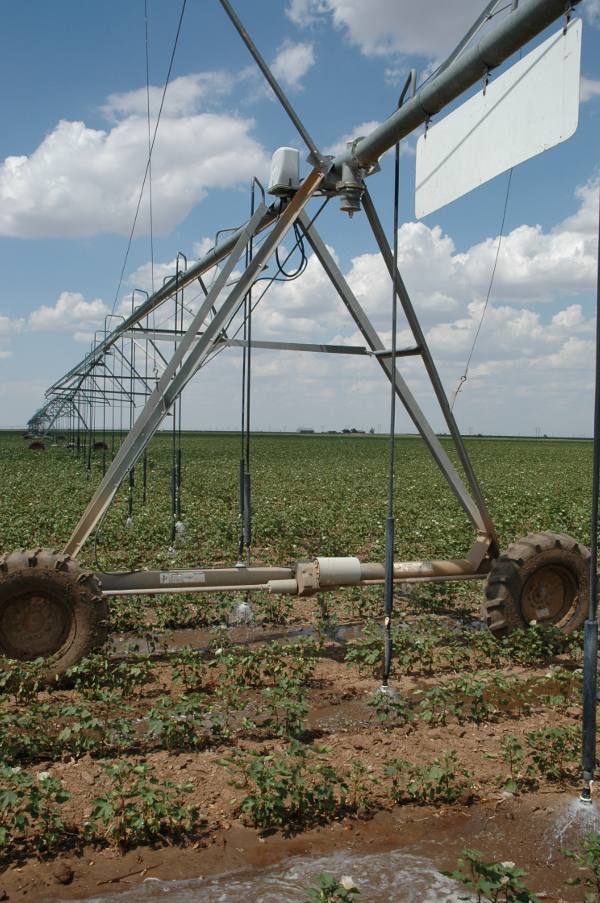
A diminishing aquifer, prolonged drought, the possible impact of fracking, a few rumblings of concern that the federal government might begin to intervene in state groundwater regulations and a few-less-than friendly state legislators have Texas agricultural leaders concerned about how the future water needs of farmers and ranchers will be met.
“Water is a complex issue in Texas,” says David Gibson, executive director, Texas Corn Producers Board, speaking during the opening session of the Southwest Ag Issues Summit in Oklahoma City Sunday (Sept. 8).
Gibson, moderating a water issues roundtable discussion, said the drought of 2011 “put water in a different perspective,” for corn growers. “We had water issues where we had never had issues before. It woke us up a little bit.”
If you are enjoying reading this article, please check out Southwest Farm Press Daily and receive the latest news right to your inbox.
The drought also captured the attention of several Texas state legislators, some of whom are not particularly attuned to the needs of agriculture. Gibson says several would like to see increased water district cooperation to create a more consistent model. “They want all districts to look the same,” Gibson said.
But, he explained, water districts are not the same. Some are located over part of an aquifer that may have more water than is available in another district. Some districts are composed of multiple counties; some are single counties.
He said several state legislators “file a pile of water legislation” every year that does not reflect the needs of agriculture.
Gibson expressed concern that the federal government could take over state groundwater regulations. Currently, the state of Texas regulates groundwater—typically through water districts. “I can’t imagine having to deal with groundwater issues under the federal government,” he said.
An audience member asked about the current level and lifespan of the Ogallala aquifer. Dr. Jeff Johnson, Texas Tech University, explained that current status of the aquifer “depends on where you are. Some areas are running out of water now; others have deep pockets of water that will still be available after other areas have run out.”
But the situation is serious, Johnson said. “In 30 years, we will have significantly less water than we do now. We could see a serious impact on irrigation. But we’ve heard that we were running out of water since the 1970s. Things change; we develop more efficient irrigation and new technology.”
Recharge of an aquifer is also a big question. e said the Ogllala
Although much of the Ogallala currently isn’t receiving significant recharge, “some areas are recharging more than was expected from previous studies.”
Gibson said fracking may have more impact on water levels than has been reported and some have pointed out the value of water used for fracking to get oil versus water for producing crops. “They need to consider that agriculture value is spread over a long term,” he said.
He also noted that by current Texas law fracking to produce oil is exempt from water use reporting.
Many of the water regulations currently in place, Gibson explained, were initiated through Senate Bill 1, passed in 1997. “Sine 2001, new laws have been enacted that changed regulations.”
Currently, the Texas Water Development Board must come up with a water plan for use and conservation, taking into account demand and disappearance for the next 50 years. “The last plan was developed in 2012.
“A lot of legislators want to talk about ‘our water,’ but they live up and down the I-35 Corridor,” not in farm and ranch country, Gibson notes.
Water continues to be a complex and often contentious issue in Texas—as well as in other Southwestern states. “I never go to a meeting that water issues don’t come up,” he said.
The Second Annual Southwest Ag Issues Summit is sponsored by the Southwest Council of Agribusiness and the Texas Ag Forum (an entity coordinated by the Ag and Food Policy Center at Texas A&M University).
Also of interest:
Texas faces water shortage without water plan
The Conundrum of Texas water rights: Who has ultimate claim to the state’s…
Mexico's water crisis may shed light on water treaty non-complian…
About the Author(s)
You May Also Like






